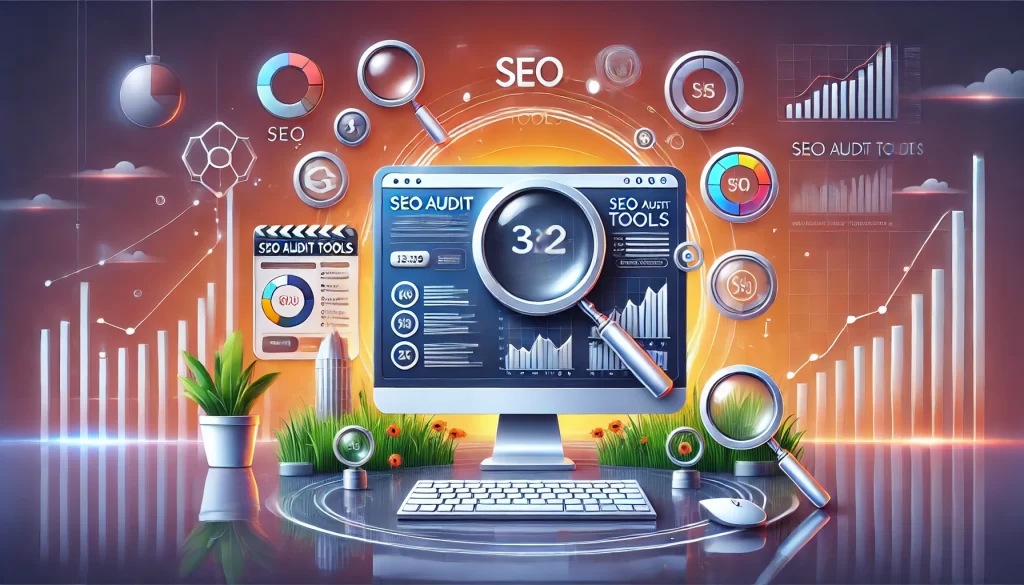In the digital marketing landscape, three major strategies dominate: paid ads, paid search, and SEO (Search Engine Optimization). Each of these strategies has its own set of benefits and challenges, and choosing between them can be difficult. Businesses often wonder which method will give them the best return on investment (ROI) or deliver the results they need the fastest. We’ll explore the differences between paid ads, paid search, and SEO. We’ll also provide guidance on when to use each strategy, and how combining them can lead to optimal results. Understanding these methods is key to developing a successful digital marketing plan.

SEO vs Paid Search
Key Differences Between Organic SEO and Paid Search
Both SEO and paid search are designed to drive traffic to your website, but they work in different ways. SEO involves optimizing your website to rank higher in organic search results. These results are earned through improving your content, structure, and technical SEO elements. On the other hand, paid search (also known as pay-per-click, or PPC) allows you to bid on specific keywords, placing ads that appear at the top or bottom of search results.
Related Posts
- Paid Search Specifications Guide
- Comparing Paid Ads, Paid Search, and SEO
- Understanding Paid Social and Paid Search
The main differences lie in the cost structure and time investment:
- SEO: SEO is a long-term strategy that focuses on organic rankings. While it requires significant time and effort, the traffic it generates is essentially free, except for the cost of your time and resources.
- Paid Search: With paid search, you pay every time a user clicks on your ad. This provides immediate visibility but comes with ongoing costs. The results are instant, as ads appear immediately after the campaign is set up.
When to Choose SEO and When to Invest in Paid Search
- Choose SEO when you want sustainable, long-term traffic and organic visibility. SEO is ideal for building authority and trust over time, especially for businesses looking for consistent results without ongoing advertising spend.
- Choose Paid Search if you need immediate visibility and are targeting high-intent users who are actively searching for your products or services. It’s also a good option for testing keywords and understanding market demand quickly.
Pros and Cons of Each: Cost, Time, Results
- SEO Pros:
- Long-term ROI
- No ongoing costs for clicks or impressions
- Builds trust and credibility
- SEO Cons:
- Requires significant time and effort
- Results may take months to achieve
- Dependent on algorithm changes and SEO best practices
- Paid Search Pros:
- Instant results
- Control over targeting and visibility
- Scalable based on budget
- Paid Search Cons:
- Ongoing cost-per-click (CPC)
- Can be expensive, especially for competitive keywords
- No long-term benefits after the campaign ends
Combining SEO and Paid Search for Maximum Impact
Using both SEO and paid search together can maximize your digital strategy. By running paid search campaigns, you can drive immediate traffic while simultaneously working on your SEO for long-term results. Additionally, using paid search data can help inform your SEO strategy, allowing you to target high-converting keywords that may not have been part of your initial plan.
Paid Search vs SEO
In-Depth Comparison of the Two Strategies
When comparing paid search and SEO, it’s important to understand that they serve different purposes:
- Paid Search: PPC ads are perfect for capturing users with high intent. These users are typically ready to purchase or convert and are searching with specific keywords. Paid search can also help brands get in front of potential customers quickly, whether they are just entering the market or searching for a product or service immediately.
- SEO: SEO is a strategy focused on ranking organically for a variety of terms. It targets users at various stages of the buying cycle, whether they are still researching or ready to purchase. SEO involves long-term commitment but can ultimately generate traffic without the need for continuous investment.
Cost Analysis Long-Term vs Short-Term ROI
- Paid Search: The ROI from paid search is short-term but can be substantial if your ad targeting and bidding are optimized. The cost of running a paid search campaign depends on factors like the competition for your target keywords and your campaign’s quality score. In competitive industries, PPC can be quite expensive.
- SEO: The ROI from SEO is typically long-term. Once you have achieved high rankings, you can continue to receive traffic without paying for each click. However, achieving those rankings takes time and requires consistent effort. While there are costs associated with SEO (e.g., hiring experts or using tools), these are often lower than the ongoing costs of paid search.
SEO’s Benefit of Organic Ranking vs Paid Search’s Instant Visibility
SEO’s greatest advantage is the ability to rank organically in search results, which means that once you reach a top position, you can often maintain that visibility without paying for clicks. In contrast, paid search provides instant visibility, but that visibility disappears as soon as the campaign ends or your budget runs out.
How Search Intent Plays a Role in Determining the Right Approach
- Paid Search: Paid search is great for capturing high-intent users who are actively looking to make a purchase or take another action. For example, someone searching for “buy running shoes” is likely looking to make a purchase, which makes them a good target for paid search ads.
- SEO: SEO is better for capturing users at all stages of the customer journey. For example, someone searching for “best running shoes for beginners” might be in the research phase, and SEO can help position your content as a helpful resource.

Is Paid Search the Same as SEO?
Clarifying the Differences in Search Results and User Behavior
While both paid search and SEO target users on search engines, they differ in the way they appear in search results. Paid search ads appear in the designated ad section at the top or bottom of the page, while organic results are below the ads. Users tend to trust organic results more than ads, as they see them as more natural and credible.
Related Posts
- Paid Search Specifications Guide
- Understanding Paid Social and Paid Search
- Comparing Paid Ads, Paid Search, and SEO
Related Posts
How SEO and Paid Search Can Complement Each Other
Although SEO and paid search are different, they can work well together. SEO can help increase visibility for long-term brand growth, while paid search can drive immediate traffic and target specific keywords. By using both strategies, you can target a wider audience and increase overall visibility.
Understanding the Role of Paid Search in Overall Digital Marketing Strategy
Paid search plays a vital role in any comprehensive digital marketing strategy. It allows businesses to target specific audiences and get immediate results. When used in combination with SEO, paid search can enhance visibility and drive quick conversions, while SEO works to build long-term brand authority and organic traffic.
SEO vs Paid Ads
Key Factors Influencing the Choice Between SEO and Paid Ads
When deciding whether to focus on SEO or paid ads, several factors need to be considered:
- Budget: Paid ads require an ongoing budget, while SEO requires time and effort but offers long-term benefits without continuous costs.
- Timeframe: If you need quick results, paid ads are the better choice. If you’re planning for sustainable growth, SEO is a long-term investment.
- Competition: In highly competitive industries, SEO may be harder to achieve, making paid ads a necessary tool to stay visible.
Budget Considerations for Both Strategies
- SEO: The costs for SEO typically involve tools, content creation, and possibly hiring experts or an agency. However, there are no costs for clicks or impressions once you rank.
- Paid Ads: Budgeting for paid ads depends on your industry’s competition for keywords. Campaigns are based on bidding, meaning costs can vary depending on demand.
The Potential for Synergy Between Organic and Paid Campaigns
A combination of both organic SEO and paid ads can lead to better results. By capturing traffic from both sources, you increase your chances of converting visitors. Furthermore, using data from paid ads can help optimize your SEO strategy by identifying keywords that are performing well.
Measuring Effectiveness SEO vs Paid Ads
To measure the effectiveness of each strategy:
- SEO: Key performance indicators (KPIs) include organic traffic, keyword rankings, and backlink growth.
- Paid Ads: KPIs for paid ads include CPC, CTR, conversion rate, and ROAS (return on ad spend).
FAQs
What is the difference between paid ads and SEO?
Paid ads involve paying for visibility in search results, while SEO focuses on improving organic rankings through on-page and off-page techniques. Paid ads provide immediate results, while SEO is a long-term strategy.
Which is better: SEO or paid search?
It depends on your goals. If you need quick visibility and targeted traffic, paid search is the better option. If you’re looking for long-term results with sustainable growth, SEO is more cost-effective in the long run.
Can SEO and paid search work together?
Yes, combining SEO and paid search can maximize visibility, drive traffic, and improve conversions. Paid search helps with immediate results, while SEO builds long-term traffic and authority.
How long does it take to see results from SEO?
SEO results can take anywhere from three to six months or more, depending on the competitiveness of your industry and the effectiveness of your strategy.
Key Takeaways
Paid ads, paid search, and SEO all offer unique advantages and challenges. Paid search provides immediate visibility, while SEO focuses on building organic rankings over time. By understanding the key differences and knowing when to use each strategy, businesses can optimize their digital marketing efforts for both short-term and long-term success.
- Paid Search provides instant visibility through ads and is great for capturing high-intent traffic.
- SEO offers sustainable, long-term results by improving organic rankings but requires time and effort.
- Combining SEO and Paid Search can lead to more comprehensive digital marketing success.
Paid Ads offer quick results but come with ongoing costs, while SEO has long-term benefits but requires an investment of time.
